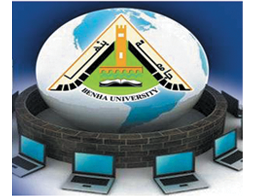Economics Of Irrigation Systems In Some Of The Egyptian Desert Areas:
|
|
Author | |||||
|
Ph.D
|
Type | |||||
|
Benha University
|
University | |||||
|
|
Faculty | |||||
|
2000
|
Publish Year | |||||
|
The Agricultural sector plays an important part III econormc development of the Arab Republic of Egypt. So, the agricultural production should be developed to improve its contribution to the integrated economic development. It should be mentioned that the irrigating water resources has become one of the main limitations of the horizontal development. The research problem is based on the assumption that the prevailing use of irrigating water recources proved to the deviated from the optimum use. So, the main objective of this study is to investigate the economics of irrigation systems in selected Egyptian desert regions. The study comprises an introduction and four chapters. The first shapter deals with the the oritical framework and review of literatures related to economics of irrigation systems. The second one deals with the economic analysis of irrigation systems in the study sample. this chapter is eludes two parts, the first parts discusses the describtion of research sample, while the second one analyses the economic efficiency of irrigation systems in the study sample. Some economic criteria such as ratio of net return per feddan to the weighted average production cast per feddan and ratio of net return to weighted average of irrigation cast, have been applied. It has been found that Belbase region showed its superiority to New-Salhia region with respect to the estimated economic criteria and under the studied inigation systems with refernce to the first criterion, the average net return per unit of production casts amounted to L.E. 0.20 and 0.36 under Drip Irrigation versus L.E. 0.48 and 0.42 under sprinklar irrigation for the above mentioned two region respectively. Concerning the second criterion, the average net return per unit of irrigation cast amounted to L.E. 3.9 and 11.3 under Drip Irrigation versus L.E. 7.4 and 0.82 under sprinklar Irrigation for the two regions respectively. from the third chapter, the estimated production functions of Grapes, Mangoes and peach, showed the deceasing return to scale, while the aggregate production elasticity for citrus, apples, bananas and olives, revealed the increasing return to scale. The production function of date palms indicated that inputs are inefficiently used under Drip Irrigation. Under the Sprinklar Irigation, the wheat production function showed the decreasing return to scale. With reference to El-Salhia, the estimated production functions for grapes, citru, Mangoes, peper, tomatoes, cantalop, Pear, showed the decreasing return to scale under Drip Irrigation. Also, the wheat production function indicated the decreasing return to scale under the sprinklar Irrigation. In the fourth chapter, the cast function of the studied crops In Belbaseunder Drip Irrigation have been analysed. It has been concluded that theresource use, in apple, date palms, Bananas and citrus, proved to be in thefirst stage of production. But the resource use of the other studied cropsproved to be in the economic stage of production. Under the Sprinklar Irrigation, the resource use in wheat production proved to be in the ineconomic stage Concerning the resource use in the studied crops under Drip irrigation In EI-Salhia, proved to be in the economic stage. Also, the resource use in wheat production under Sprinklar Irrigation proved to be in the economic stage. Based on the study findings, some problems that faces the desert agriculture, have been reached. So, the study presented some recommendations that may help policy makers and final users to improve theefficiency of modem irrigation systems and to rationalize the irrigating waterresources. |
Abstract | |||||
|
| .
Attachments |








